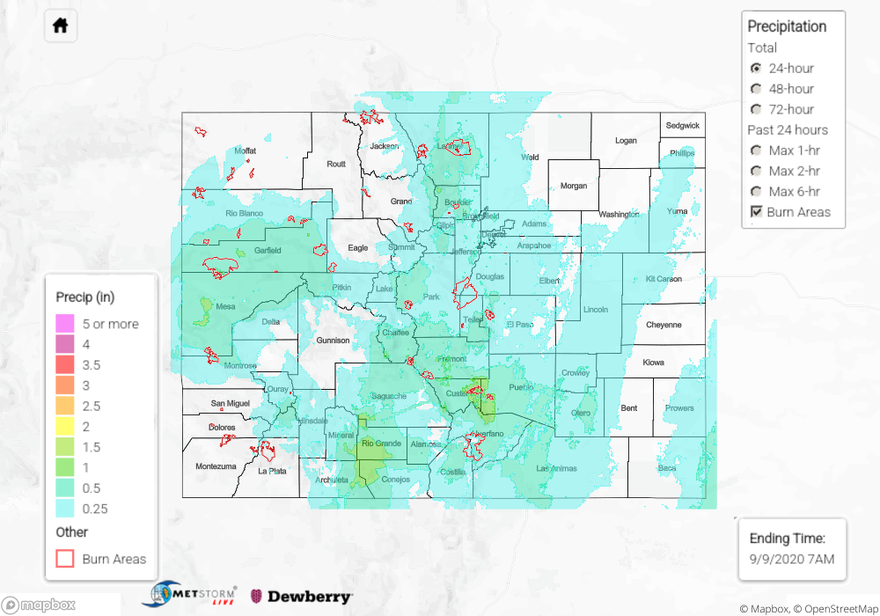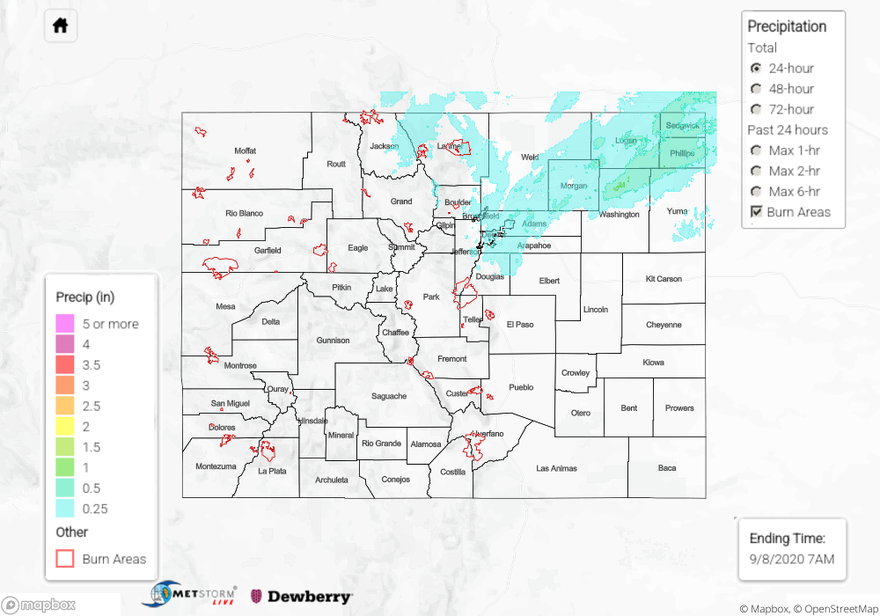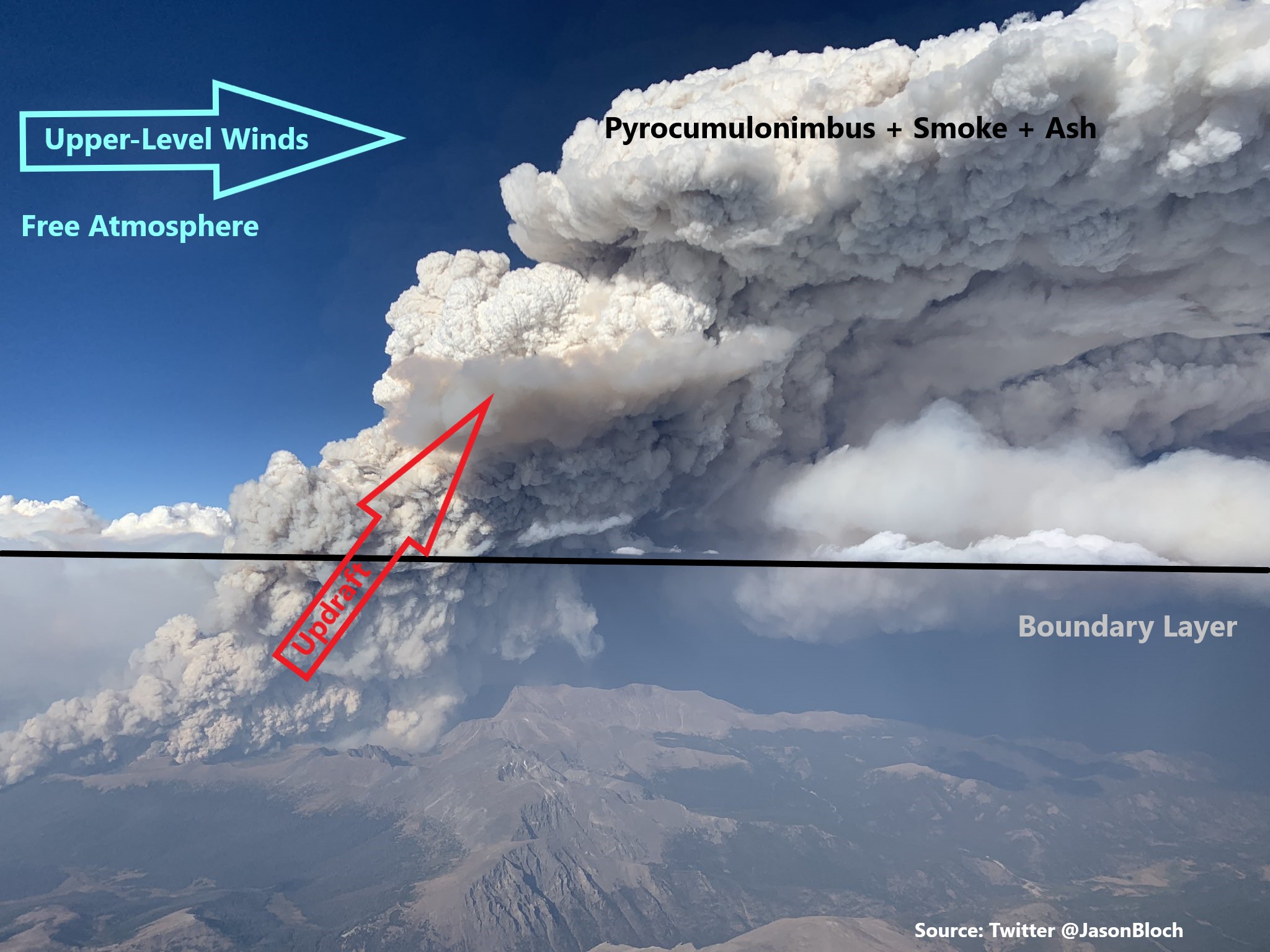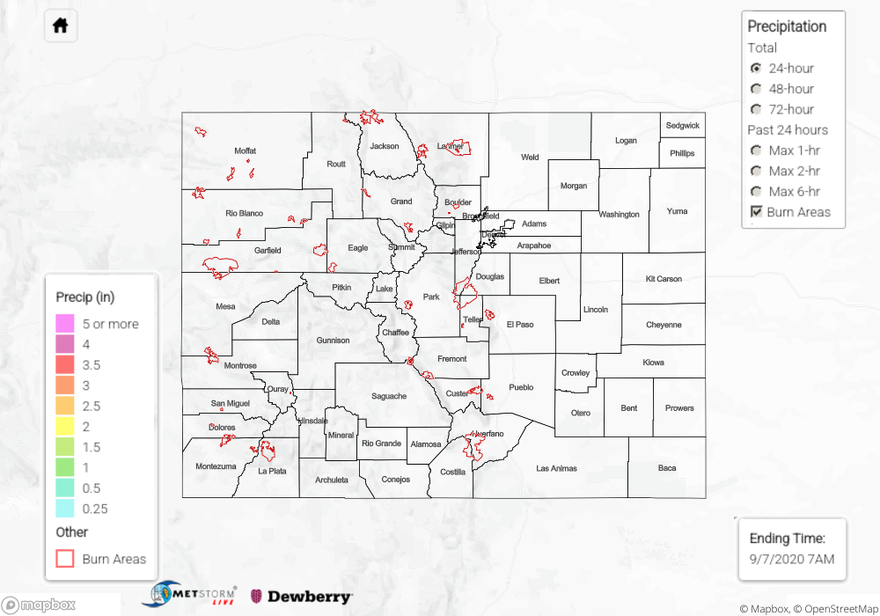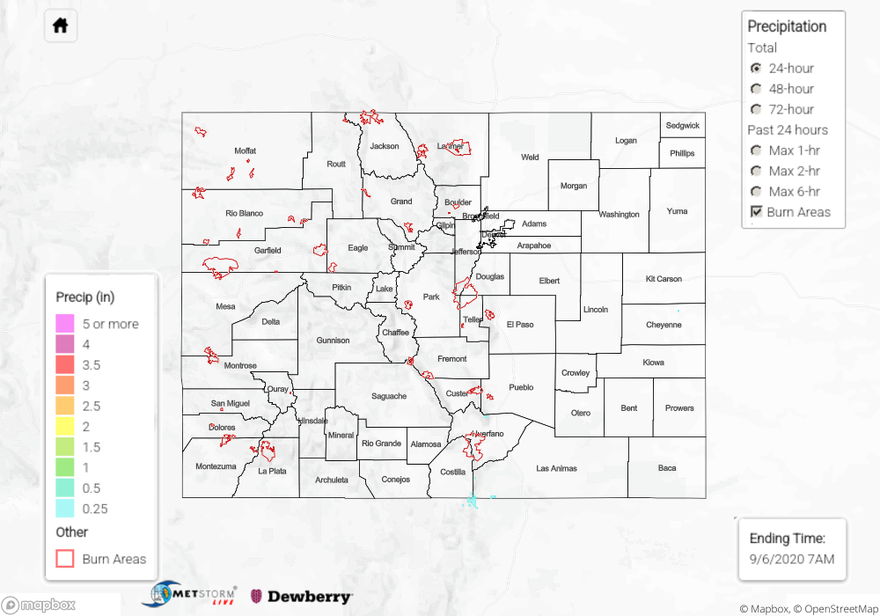Issue Date: Wednesday, September 9th, 2020
Issue Time: 10:35AM MDT
Summary:
The cold front pushed south in the overnight hours on Monday. This allowed snow to start falling early Monday into Tuesday across the state. The cold air was a bit slower to move south over western Colorado. With temperatures in the 60Fs and 70Fs across the southern border, a couple thunderstorms developed over the southern San Juan Mountains and eastern Southwest Slope before the front arrived. Quarter inch hail was reported with the storms near Durango and Silverton and 45 mph wind gusts before the rain crossed over to snow at the higher elevations. Over southern Archuleta County, a heavy rainfall report of 1.62 inches was reported (CoCoRaHS) for the 24-hour period. Conejos had another report of 1.39 inches with Rio Grande County receiving a report of 1.69 inches. As far as snowfall reports as of 10AM, reports were only between 2 and 3 inches over the San Juan Mountains, but likely higher amounts fell. The Grand Valley, specifically Grand Junction received between 0.60 and 1 inch of rainfall. This is the first significant rainfall for the area for quite some time (June). While not a drought buster, the rainfall and cooler temperatures must have felt refreshing. However, it is likely that crops were damaged with temperatures falling to 32F for a few hours. For snowfall, 1 to 4 inches were reported over the higher elevations in Mesa County. Flooding has not been reported as of 10:30AM this morning, and the snow and mix precipitation continues. Tune back in tomorrow for the latest observations. The snow reports below are only a sample of what have fallen and been reported. Significant melting occurred over the lower elevations due to the non-frozen soils and warm pavement.
Snow reports as of this morning (10:30AM):
- Central Mountains: 2 to 6 inches; 6-12 inches in Chaffee County
- San Juan Mountains: 1 to 3 inches
- Northwest Slope/Northern Mountains: 4 to 7 inches (very strong winds with gusts recorded between 45 and 65 mph)
- Front Range: 3.5 to 6.5 inches
- Southern Urban Corridor/Palmer Ridge: 3 to 6 inches
- Northern Urban Corridor: 1 to 4 inches (higher amounts in Fort Collins)
- Southeast Mountains: 6 to 14 inches
- Western Southeast Plains/Raton Ridge: 1 to 4 inches
- Northeast Plains: 0.5 to 3 inches
- San Luis Valley: 13.8 inches (Alamosa)
- Grand Valley/Southwest Slope: 1 to 4 inches (higher elevations)
Large Colorado wildfire update (as of 10:30AM on InciWeb):
Cameron Peak in the Medicine Bow Mountains: 102,596 acres; 4% contained
Williams Fork in the Arapaho National Forest: 12,157 acres; 10% contained
Pine Gulch north of Grand Junction: 139,007 acres; 95% contained
Grizzly Creek in Glenwood Canyon: 32,464 acres; 91% contained
To see (liquid) precipitation estimates over your neighborhood the last 24-hours, scroll down to the State Precipitation Map below.
Click Here For Map Overview
